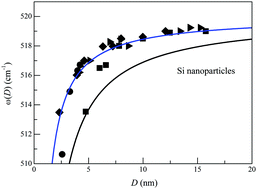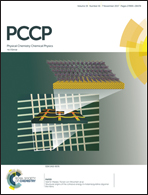Size-dependent Raman shift of semiconductor nanomaterials determined using bond number and strength
Abstract
Significant variations in Raman shifts with decreasing material size, D, have been detected in Raman spectroscopy. In this study, we propose a simple and unified model to determine and explain the size-dependent Raman shift, ω(D), of low-dimensional semiconductor nanomaterials. ω(D) was found to be a function of bond number in a system, with an obvious decline in Raman shift observed when size dropped to the nanoscale. This arose from a decrease in coordination number, Z(D), and increase in single bond strength, ε(D). The predicted results show good agreement with experimental data for a series of semiconductor nanomaterials, showing that bond number can be used to calculate Raman shifts of nanomaterials. Moreover, this theoretical model was successfully applied to both single crystals and some binary semiconductor nanomaterials. Furthermore, bond number, which is directly related to the nanomaterial shape and size, becomes the only parameter required to determine ω(D) in this model, as both Z(D) and ε(D) can be determined from the bond number. This indicates that the established model has the potential to determine Raman shifts of nanomaterials with different shapes and sizes.



 Please wait while we load your content...
Please wait while we load your content...